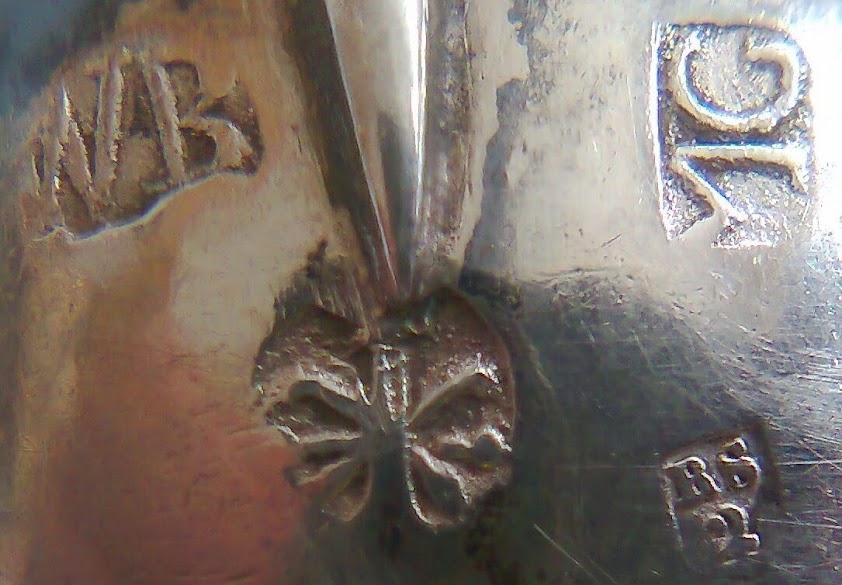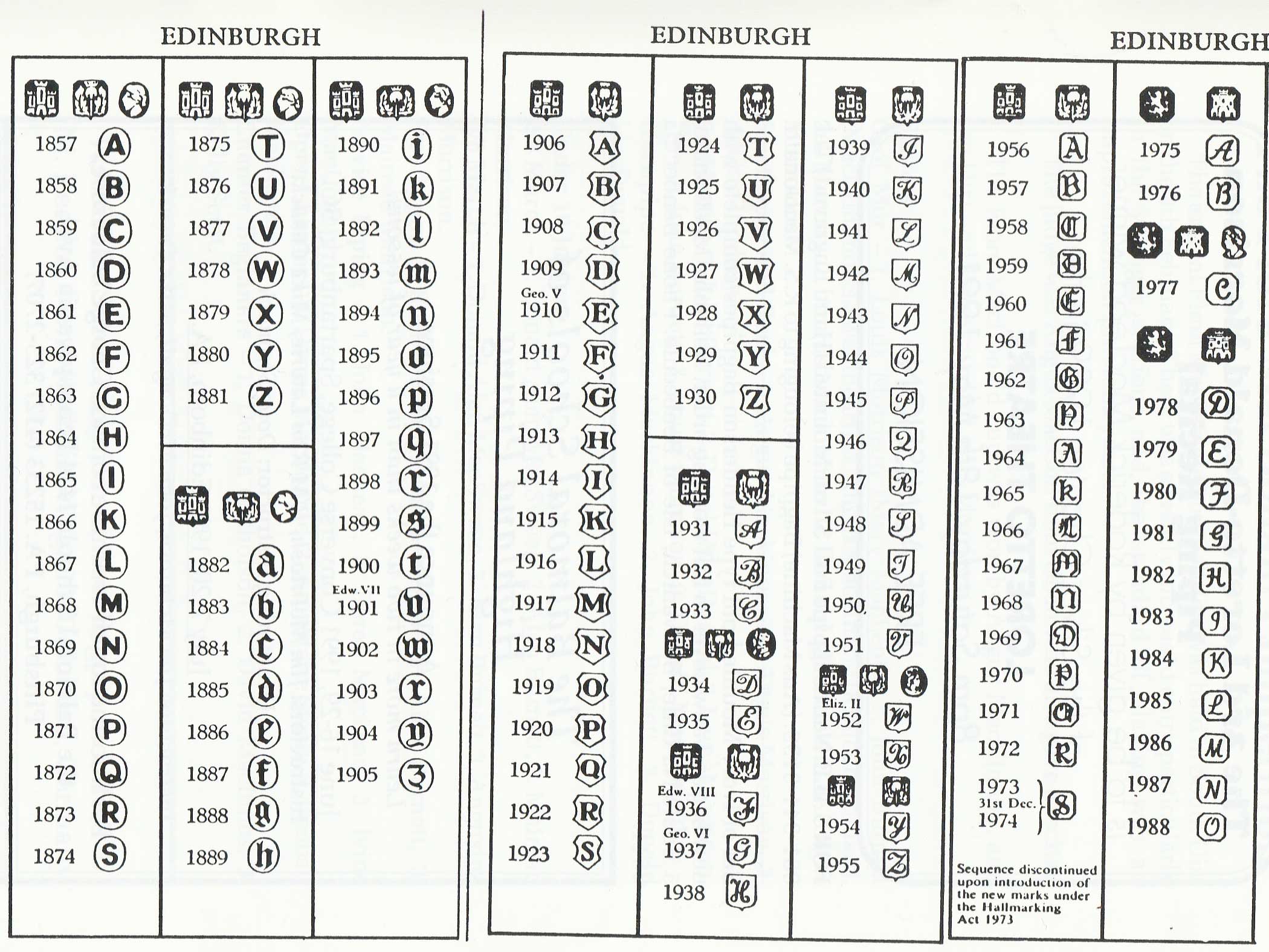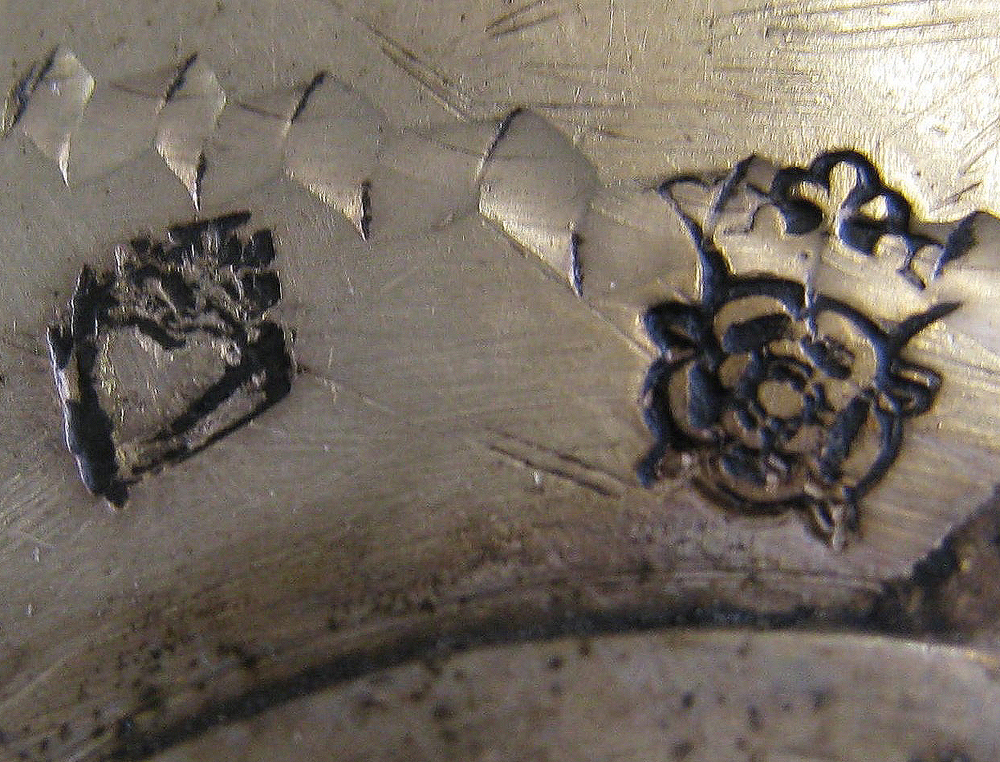Dutch Silver? Only two hallmarks? Antiques Board
Maker's marks usually have a limited lifespan that mirrors the active period of the silversmith. Some show small changes over time that reflect family events and changes of management. And, as illustrated below, in 1953 Dutch silver hallmarks have been adjusted to internationally accepted standards, thus creating a clear division of silver.

A DUTCH SILVER MOUNTED TORTOISESHELL AND WOOD BOX, MAKERS MARK E, BATAVIA, 16671730 rectangular
Mark used c. 1910 to 1915 by Fulper Pottery Co. This was the first mark—FULPER in a rectangle—used by this company using the Hobo typeface. It is commonly referenced by collectors and dealers as the Fulper "ink mark.". Fake ink marks have been found drawn with a black marker on pieces not made by this company.

Multimarked (MG, WB & BS2) apostle spoon. Old continental s
The Rijksmuseum is working on a database of Dutch silver marks coupled to an automated recognition system. In the future, unknown marks can be compared through a portal with those in the database.. The predictions made by the network are already 99% accurate. If possible, the date, maker and place of origin of the object can then be.

DUTCH SILVER Individual company unverified; hallmark is for the type of silver in use after
THE NETHERLANDS (1807 - 1953) A silver or gold object that is to be sold commercially is, in most countries, stamped with one or more hallmarks indicating the purity of the metal and the mark of the manufacturer or silversmith. The word "HALLMARK" derives from the fact that, since the 16th century, precious metals were sent to the London.
Dutch Silver? Only two hallmarks? Antiques Board
After the French were defeated and the new Kingdom of the Netherlands (See Note 8) was formed, new rules about the shape of the maker's marks were introduced. Therefore, in the Netherlands it is now common to see a variety of silversmiths to have a few different makers' marks (See Figure 24 below). Figure 24: (A) and (B) Same silversmith.

Dutch Hallmarks Encyclopedia Of Silver Marks, Hallmarks Makers' Marks
Examples of Dutch Hallmarks Hallmarking A - Silver guild marks used in some 35 of the larger towns and cities of the Netherlands from the 15th through 18th Centuries, this system remained in use until the time of the French occupation (1795-1813). In 1798 guilds were declared abolished but remained partially active until 1807. The example mark reads, top to bottom: date mark (letter Z) for.
Dutch Hallmarks Encyclopedia of Silver Marks, Hallmarks & Makers' Marks
Date Code Marks on Netherlands Silver Examples of Dutch Hallmarks Hallmarking A - Silver guild marks used in some 35 of the larger towns and cities the Netherlands in the 17th and 18th Centuries. This system remained in use until the time of the French occupation (1798-1809)and the dismantling the guilds in 1810. They are, […]

A DUTCH SILVER EWER THE HAGUE, 1660, MAKER'S MARK A FIGURE, POSSIBLY ATTRIBUTED TO JONAS
The marks of electroplated silver were often inspired to the hallmarking used for sterling silver and the maker was identified by its initials inside a series of squares, circles, shields, etc. The effect was apparently similar to sterling silver hallmarks, obtaining the result to gratify the buyer's pride to exhibit a high value object and the.

Netherlands marks SMP Silver Salon Forums
The Oval with tulip; maker's mark for Isaac de Vries, born 1700, the son of silversmith Michiel de Vries & Sarah Keysers, master 1732, died 1779. Dutch Silver Guild Marks: Saint Andrew's Crosses in combination with date letter, for the city of Amsterdam, 2nd Standard (kleine keur) for Amsterdam or .833 fineness, the letter N for 1747 or 1772.
Dutch Silver? Only two hallmarks? Antiques Board
The marks on the bottom of a piece of silver can be an indication of the age, maker, and origin of the piece. This mark is referred to as a "hallmark.". To find Kovels' silver hallmarks' database, go to "Look for your mark. " Other articles and marks can be found in" Silver and Other Metals identification guide and in the Article.
Dutch Silver? Only two hallmarks? Antiques Board
1. Marker's mark: Dutch silver usually carries a marker's mark, which is a unique symbol or initials of the silversmith. This mark can help identify the maker and authenticate the piece. 2. Hallmarks: Look for Dutch hallmarks, which indicate the purity of the silver. These hallmarks may include a lion rampant (indicating .833 silver), a sword (indicating .934 silver), or a Minerva head.

Pin on Hallmarks etc
The "2" below the lion indicates a fineness of .833 silver. Next is the Minerva head with a "M" on the helmet. This is the duty mark, and the "M" indicates the Schoonhoven assay office. The year letter "T" indicates 1929. But it is the Dutch maker's mark which confounds me!

A Dutch silver large brandy bowl, maker's mark indistinct, Groningen, 166364 Brandy, European
Hallmarking A - Silver guild marks used in some 35 of the larger towns and cities the Netherlands in the 17th and 18th Centuries. This system remained in use until the time of the French occupation (1798-1809)and the dismantling the guilds in 1810. They are, top to bottom; date mark letter Z for 1782, Rotterdam city mark, and Lion Rampant silver guarantee mark (.875) and maker's mark of.
DUTCH SILVER MAKERS MARKS MAKERS MARKS
1. English standard mark 925-1000 post 1822. 2. Dutch silver standard mark used after 1814. (submitted by - Trev) • Lion Rampant - Lion standing on its hind legs. 1. Scottish standard 925-1000. 2. Dutch silver standard mark; crowned before c.1810, uncrowned after 1814 for .934 standard (submitted by - Trev) •

Dutch suger bowl old marks or Pseudo marks?
Purity Mark. This mark is probably the easiest to spot when looking at Dutch silver and is always in the shape of a lion. The above purity mark shows a lion passant (the lion is in a walking pose with a front paw raised) and it is also accompanied by a number 2 at the bottom of the mark, this purity mark indicates the item is .833 purity silver.

Dutch silver cups and silver rimmonim Victoria and Albert Museum
The #12345 refers to the corresponding number in " Meestertekens van Nederlandse Goud- en Zilvermeden 1814-1963" (Staatsuitgeverij 's-Gravenhage 1980). The #S123 refers to Schoonhoven makers active after 1940. Dutch silver makers marks consists of silversmith initials into a shaped contour, often accompanied by numbers or symbols.